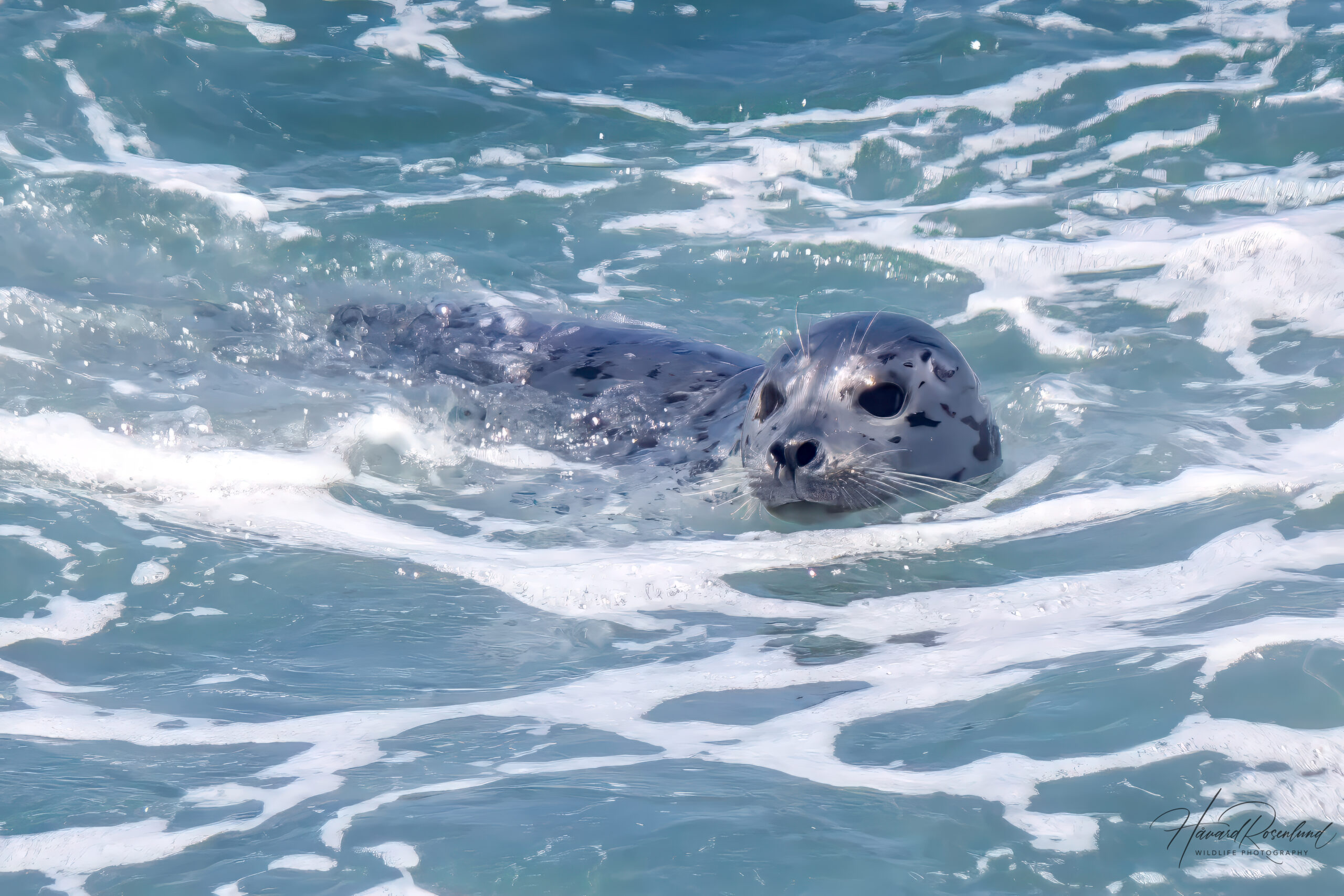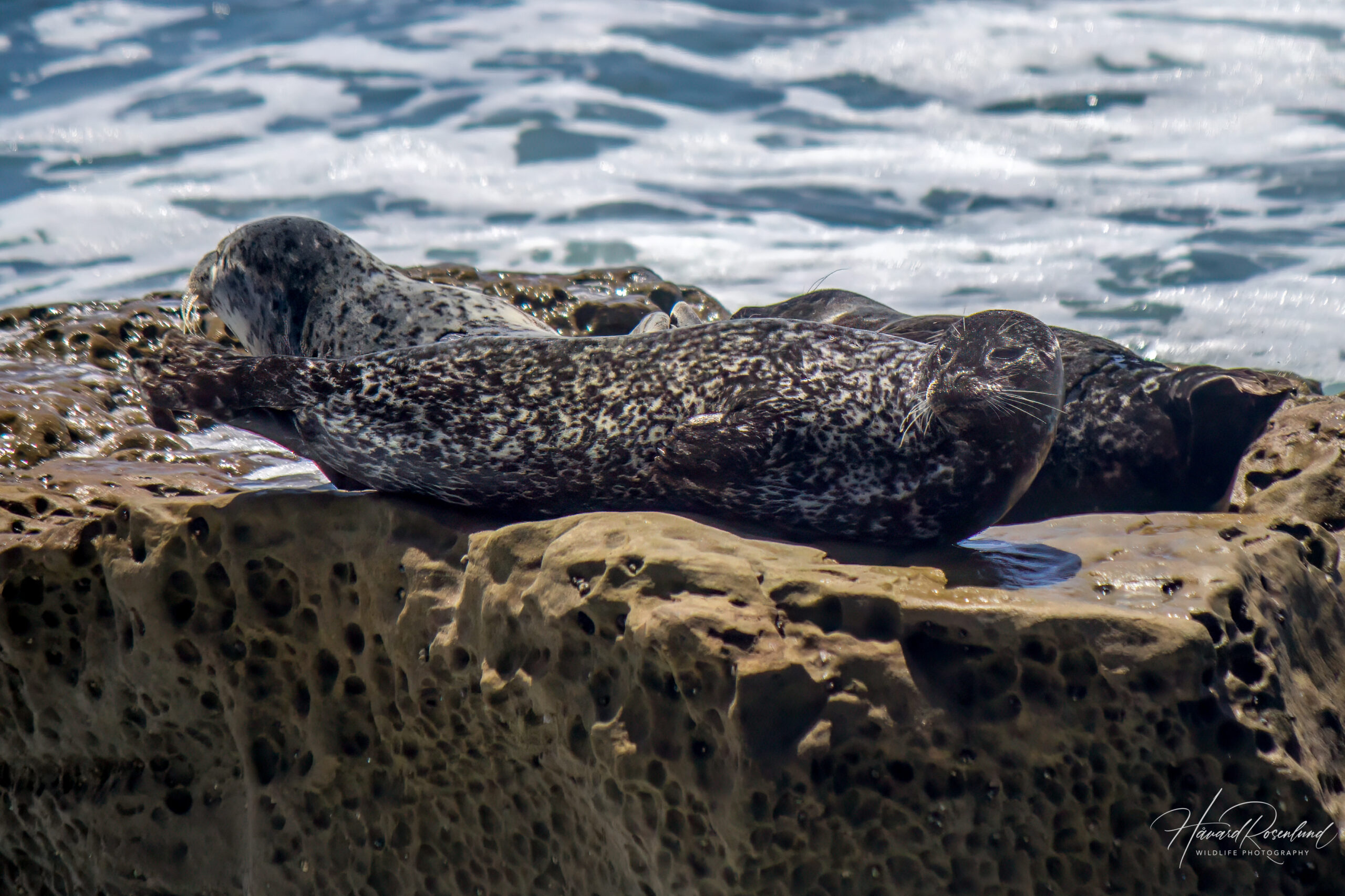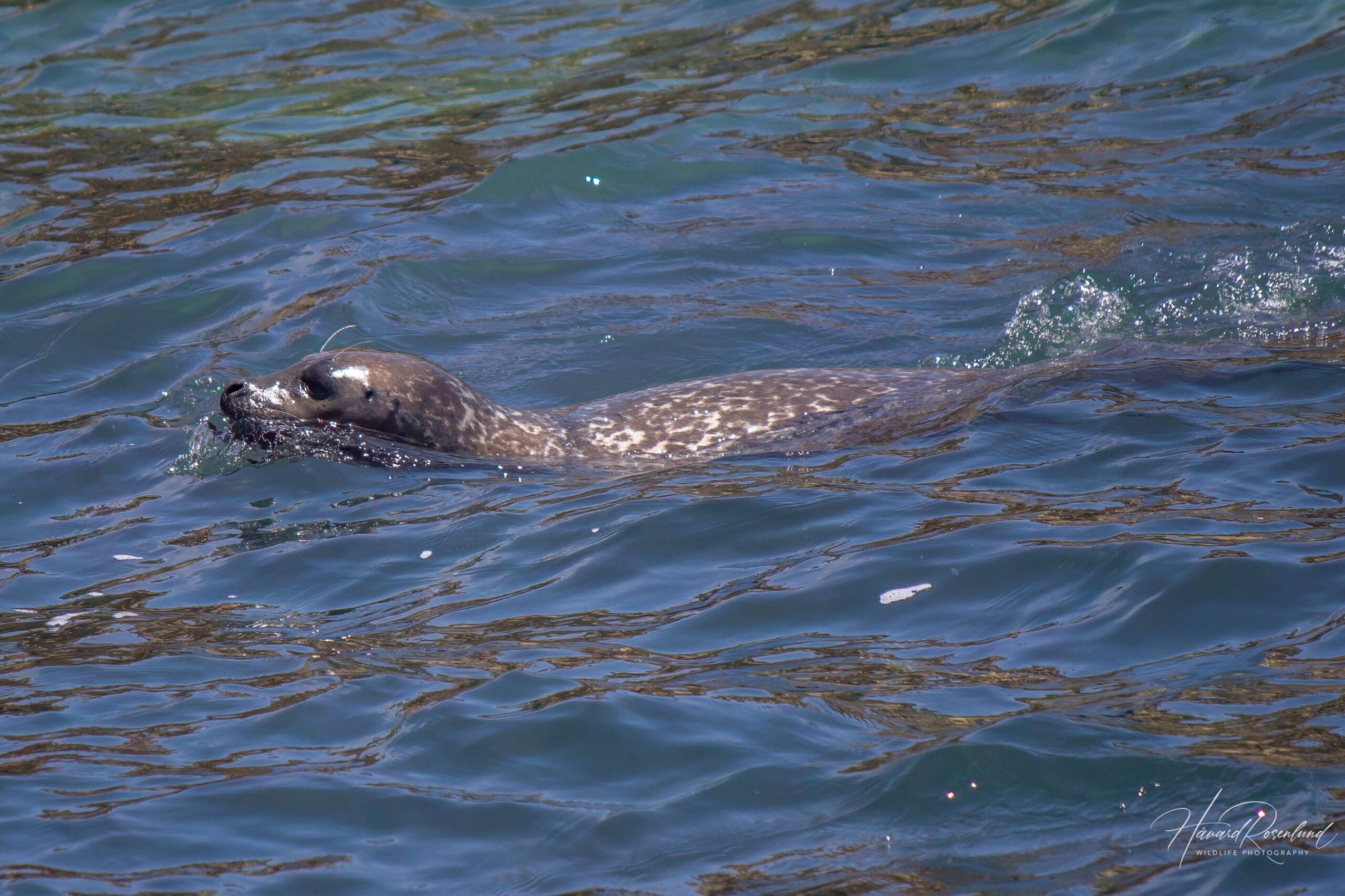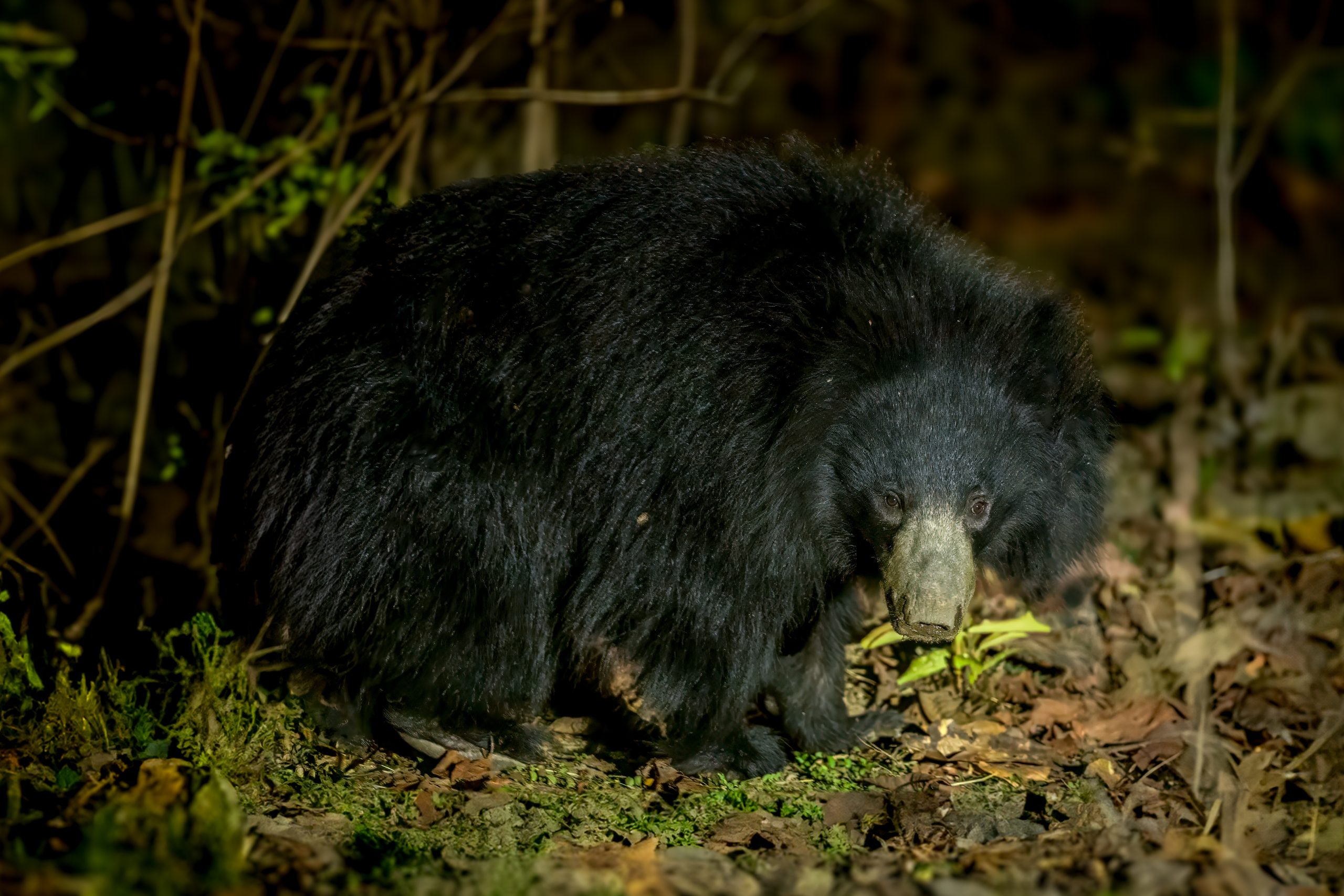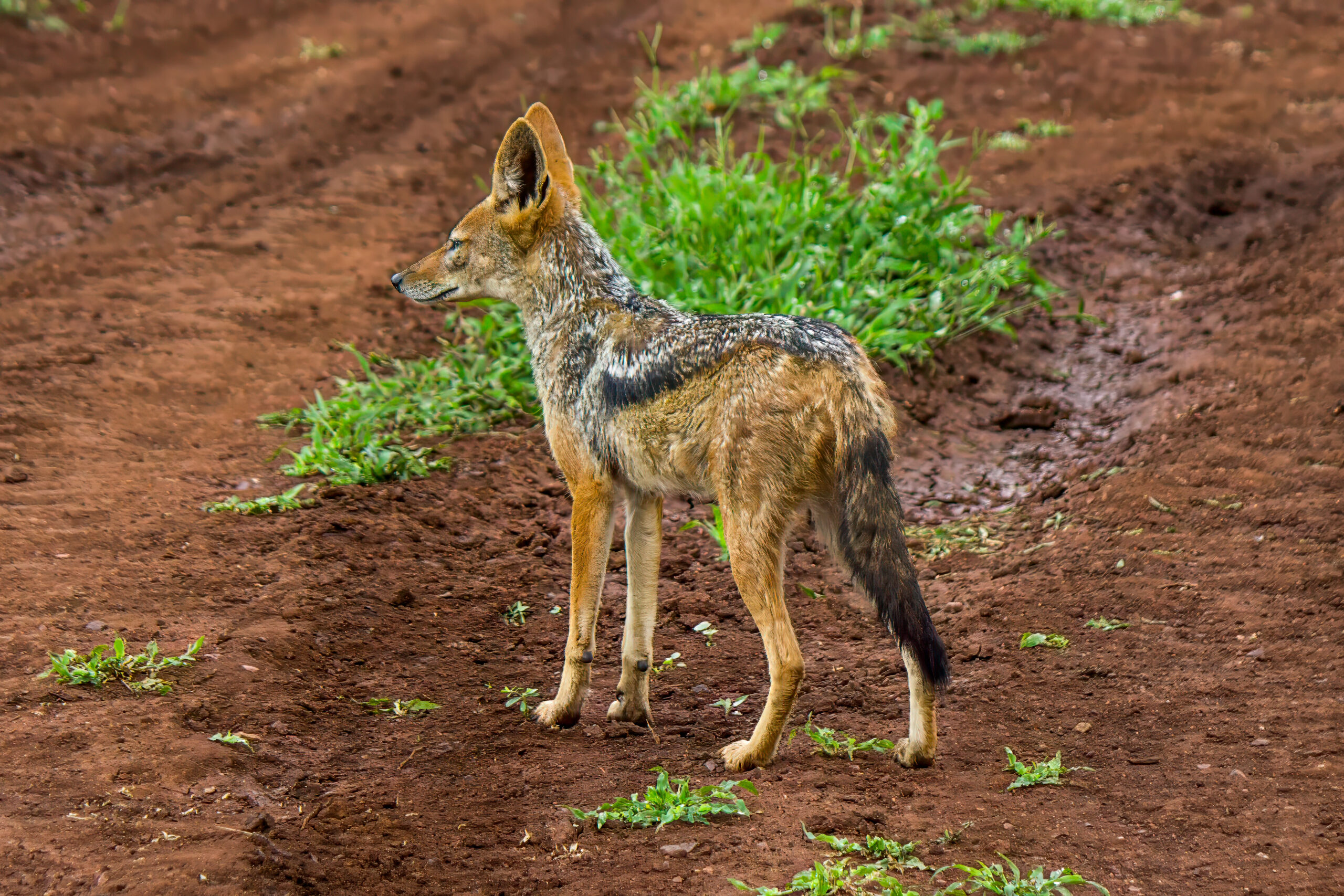Description
The harbor seal (Phoca vitulina), also known as common seal, is a widely distributed species of earless seal found along temperate and Arctic marine coastlines of the Northern Hemisphere. These seals exhibit a variety of colors and patterns, usually ranging from grey to brown with dark spots. Some seal are lighter in coloration, some are darker. Adult males can reach lengths of up to 1.85 meters (6.1 feet), and females are slightly smaller. Weights can reach 168 kg (370 lb). One distinct feature that helps differentiate them from other common seals, like the grey seal (Halichoerus grypus) in the Atlantic Ocean, is their smaller size and more dog-like, rounded head.
Behavior
Harbor seals are known for their solitary nature, but they can be seen in small groups during breeding and molting seasons. They are non-migratory, spending their time in familiar areas. These seals are curious and can be spotted observing human activities from a distance. In some areas, they have been observed using their flippers to “wave” at humans. Socially, they communicate through various vocalizations and body postures, especially during mating season. They can also sleep underwater, surfacing for air without waking.
Hunting & feeding habits
The diet of harbor seals mainly consists of fish, squid, and crustaceans. They are skilled hunters, relying on their excellent sense of hearing and sight underwater to locate prey. Their whiskers are highly sensitive and can detect fish even in dark or murky waters. Typically, they hunt alone and can dive up to 500 meters (1,640 feet) deep, though they usually forage in shallower waters. Their hunting strategy involves waiting for the prey or actively chasing it. These seals are also known to follow fishing boats and feed on the bycatch.
Reproduction
Harbor seals reach sexual maturity at around 3-5 years of age. They breed annually, with the breeding season varying by location. The gestation period lasts about 9-11 months, including a period of delayed implantation. Pups are born on land, and mothers are responsible for the care, feeding them with rich milk for 4-6 weeks. Pups are precocial and can swim within hours of birth. The average lifespan of harbor seals is about 25-30 years.
Status
The harbor seal is widespread, common and has a stable population, and it is classified as least concern on the IUCN Red List. However, the species face threats from habitat loss, pollution, and entanglement in fishing gear. In some regions, they are also affected by hunting and disturbance from human activities.




